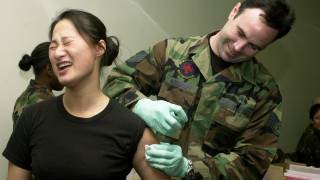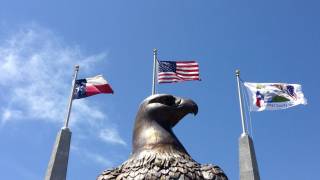Visiting Honolulu? Check Your Mumps Immunization Prior to Boarding

The Hawaii State Department of Health (DOH) continues to investigate an increasing number of cases of mumps throughout the islands.
As of January 4, 2018, the number of confirmed mumps cases has reached 770. Hawaii typically has fewer than 10 cases per year.
Most surprising, is nearly 60 percent of all cases have been in adults aged 18 years and older.
Mumps has been confirmed in children and adults, both vaccinated and unvaccinated, in these counties:
- Honolulu: 610
- Hawaii: 108
- Kauai: 49
- Maui: 3
From January 1 to December 2, 2017, 48 states and the District of Columbia have reported mumps infections in 4,980 people to Centers for Disease Control and Prevention (CDC).
Mumps is a contagious disease caused by a virus. The mumps virus spreads through saliva and other fluids from the mouth, nose, or throat.
An infected person can spread the virus by coughing, sneezing, or talking, and sharing items, such as cups or eating utensils, with others, and touching objects or surfaces with unwashed hands that are then touched by others.
Additionally, since mumps likely spreads before the salivary glands begin to swell and up to 5 days after the swelling begins, the DOH advises people to get an outbreak dose of the MMR vaccine, particularly those who live, work or socialize regularly in crowded settings.
And, the DOH recommends residents stay home when sick and consider methods of “social distancing,” such as avoiding crowded settings and gatherings, and not hugging or kissing when greeting others.
During this mumps outbreak in Hawaii, in addition to the routine vaccination recommendations, the DOH is recommending adolescents (aged 10-19 years) and adults (born in 1957 or later) receive an additional MMR vaccine dose now.
Two doses of the MMR vaccine are 88% effective at protecting against mumps, while one dose is 78% effective.
The effect of a third dose of the MMR vaccine in stopping mumps outbreaks was unknown until health officials at the University of Iowa implemented a widespread MMR vaccine program for their students.
Twenty-eight days after receiving a third MMR vaccine dose, students were found to have a 78% reduced risk of contracting mumps, the study authors wrote in the New England Journal of Medicine.
MMR vaccine doses should be separated by at least 4 weeks. A person should receive no more than 3 doses of mumps-containing vaccine, according to the DOH.
MMR-II and ProQuad vaccines both contain the protection for mumps, as well as protection against measles and rubella. ProQuad additionally protects against varicella.
Most pharmacies offer MMR vaccination services. The CDC Vaccine Price List provides private sector vaccine prices for general information. Vaccine discounts can be found here.
This Hawaii MMR Vaccine Locator highlights various venues to obtain the MMR vaccine.
Our Trust Standards: Medical Advisory Committee
- Mumps Cases and Outbreaks
- Effectiveness of a Third Dose of MMR Vaccine for Mumps Outbreak Control
- Current Issues & Advisories
- Mumps Outbreak at a University and Recommendation for a Third Dose of Measles-Mumps-Rubella Vaccine — Illinois, 2015–2016
- Measles, Mumps, Rubella, and Varicella Diseases and How to Protect Against Them


























